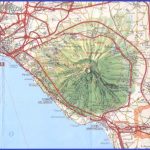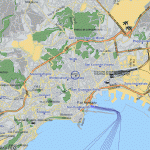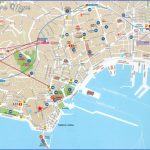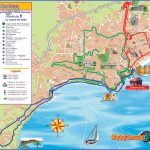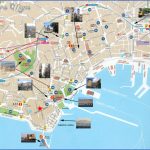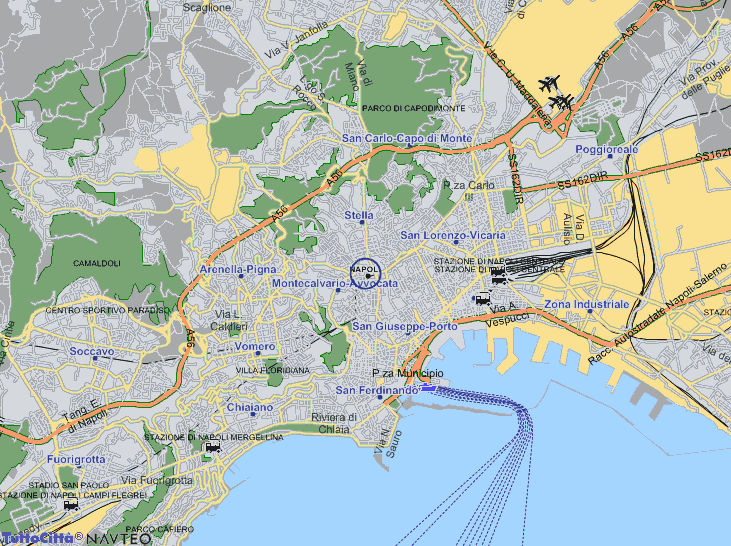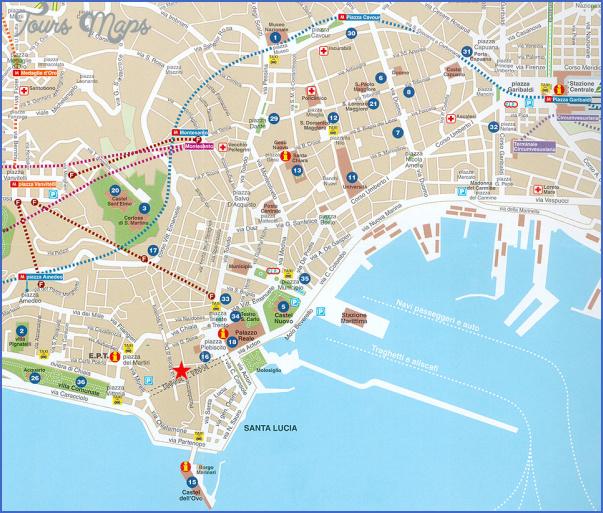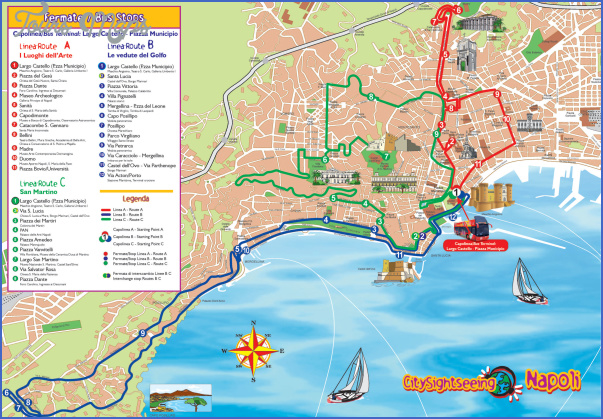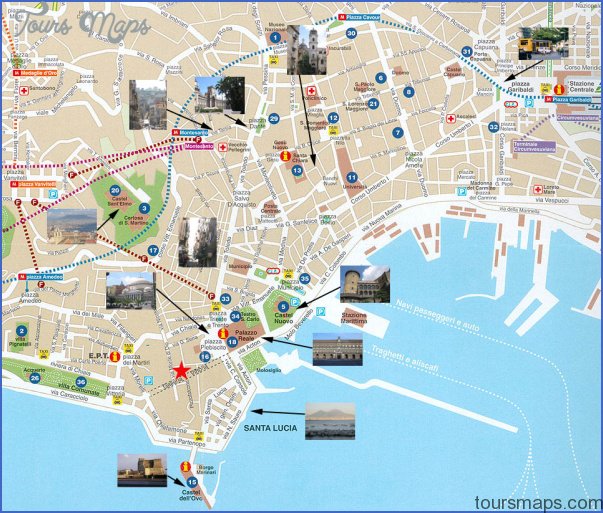MUSEO ARCHEOLOGICO NAZIONALE. Situated in the historical center within a 16th-century palazzo and former barracks, one of the world’s most important archeological museums houses exquisite treasures from Pompeand Herculaneum. The mezzanine contains a room filled with mosaics, most noticeably the Alexander Mosaic, which shows a young and fearless Alexander the Great routing a Persian army. A sporadically-open Egyptian Collection quietly inhabits the museum’s basement. Peeking out from a beautifully painted sarcophagus is the foot of a real-life mummy. (M: P. Cavour. Turn right as you exit the station and walk 2 blocks. Open Su-M and Th-Sa 9am-7:30pm. ‚6.50. Under-18 or over-65 free.)
SPACCANAPOLI. Naples’s most renowned neighborhood is replete with brilliant architecture and merits at least a 30min. stroll. The main sights get lost among ornate banks, pensioni, and pasticcerie, so watch for the shoebox-sized signs on buildings. Don’t lose track of yourself while gaping at picturesque churches, palazzi, and alleyways, lest you find yourself staring at an oncoming motorino. To get to the Historic Center from P. Dante, walk through Porta Alba and past Piazza Bellini before turning down Via dei Tribunali, the former route of an old Roman road that now contains some of the city’s best pizzerie.
DUOMO. The main attraction of the 14th-century duomo is the Capella del Tesoro di San Gennaro, decorated with Baroque paintings. A beautiful 17th-century bronze grille protects the high altar, which possesses a reliquary containing the saint’s head and two vials of his coagulated blood. According to legend, disaster will strike the city if the blood does not liquify on the celebration of his festa (three times a year); miraculously, it always does. Behind the main altar of the church lies the saint’s crypt, decorated with Renaissance carvings in white marble. Visitors can also view the newly opened underground excavation site, an intimate tangle of Greek and Roman roads constructed over several centuries. (Walk blocks up V. Duomo from C. Umberto I or take bus #42 from P. Garibaldi. Open M-F 9am-noon and 4:30-7pm, Sa-Su 8am-3:30pm and 5-7:30pm. Free; excavation site ‚3.)
PALAZZO REALE AND CASTEL NUOVO. The 17th-century Palazzo Reale contains opulent royal apartments, the Museo di Palazzo Reale, and a fantastic view from the terrace of the Royal Chapel. The Biblioteca Nazionale stores 1.5 million volumes, including the scrolls from the Villa dei Papiri in Herculaneum. The Teatro San Carlo is reputed to top the acoustics in Milan’s La Scala. (Take the R2 bus from P. Garibaldi to P. Trieste e Trento and go around to the P. Plebiscito entrance. Open M and W-Su 9am-8pm. ‚4.20.) From P. Trieste e Trento, walk up V. Vittorio Emanuele III to P. Municipio for the five-turreted Castel Nuovo, built in 1286 by Charles II of Anjou. The doublearched entrance commemorates the arrival of Alphonse I of Aragon in Naples. Inside, admire the Museo Civico. (Open M-Sa 9am-7pm. ‚5.)
NAPOLI E LA CITTA SOTTERRANEANAPOLI SOTTERRANEA. These tours of the subterranean alleys beneath the city are fascinating, but not for the claustrophobic: They will have you crawling through narrow underground passageways, grottoes, and catacombs, spotting Mussolini-era graffiti, and exploring Roman aqueducts. Napoli e la Citta explores the area underneath Castel Nuovo and downtown, and Napoli Sotterranea drags you through the area under the historic center. (Napoli e La Citta office at V.S. Anna di Palazzo. s081 40 02 56. Tours Th 9pm; Sa 10am and 6pm; Su 10am, 11am, and 6pm. ‚5. Napoli Sotterranea, P.S. Gaetano 68. Go down I. Tribunali and turn left before San Paolo Maggiore. 081 29 69 44; www.napotisotterra-nea.com. Tours every 2hr. M-F noon-4pm; Sa-Su and holidays 10am-6pm. ‚5.)
CHIESA DI SAN DOMENICO MAGGIORE. This 13th-century church has been restructured several times over the years, finally settling on a 19th-century Gothic interior. To the right of the altar in the Chapel of the Crucifix hangs the 13th-century painting that allegedly spoke to St. Thomas Aquinas, who lived in the adjoining monastery when Naples was a center of learning in Europe. Fine Renaissance sculptures decorate the side chapels. (P.S. Domenico Maggiore. Open M-F 8:30am-noon and 5&pm, Sa-Su 9:30am-lpm and 5-7pm.)
Naples Map Photo Gallery
Maybe You Like Them Too
- Explore Southgate, Michigan with this detailed map
- Explore Les Accates, France with this Detailed Map
- Explore Góra Kalwaria, Poland with this detailed map
- Explore Gumdag, Turkmenistan with this detailed map
- Explore Telfes im Stubai, Austria with this detailed map

